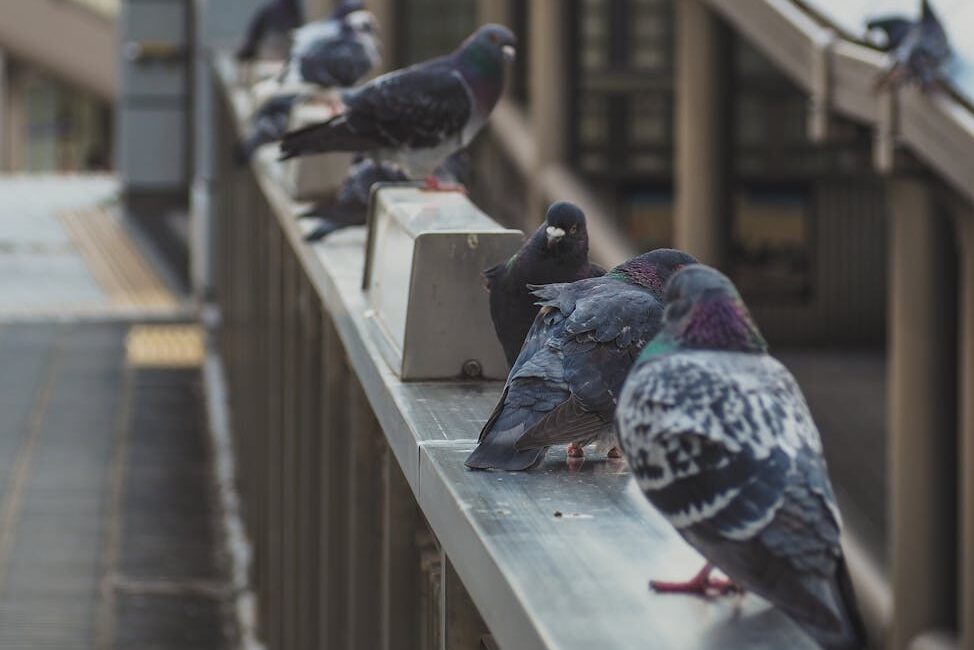How to Effectively Keep Pigeons Away: A Guide to Choosing the Right Pigeon Repellent
Pigeons, although often admired for their graceful flights and gentle cooing, can be a nuisance when they decide to roost around our homes, balconies, and outdoor spaces. Known to create noise, mess, and even damage to property, many homeowners are searching for humane yet effective ways to deter them. In this guide, we’ll explore various pigeon repellents and deterrents that can help reclaim your space.
1. Understanding Why Pigeons Settle
Pigeons are attracted to areas that provide easy access to food, water, and a safe place to nest. Urban environments, with their abundance of food scraps, sheltered buildings, and ledges, are perfect for pigeons. Their habit of returning to the same spot makes them persistent, so it’s important to implement a deterrent that is consistent and effective.
2. Types of Pigeon Repellents and Deterrents
Here are some tried-and-true methods for keeping pigeons at bay.
a) Visual Deterrents
Visual deterrents use colors, lights, or movements that scare pigeons, making them believe a predator might be nearby. Some options include:
- Reflective Tape: Reflective strips or tapes can be hung from balconies, patios, or any space pigeons frequent. The reflection and movement keep pigeons from wanting to land nearby.
- Fake Predators: Decoys like plastic owls, hawks, or snakes can be effective at scaring pigeons. However, pigeons can quickly become accustomed to them, so it’s important to move the decoys frequently.
- Shiny Objects: Hanging shiny objects, such as aluminum foil strips, old CDs, or small mirrors, can also create reflections that confuse and deter pigeons.
b) Physical Barriers
Physical barriers prevent pigeons from landing on or accessing certain areas. These are especially helpful in high-traffic areas.
- Bird Spikes: Stainless steel or plastic bird spikes make surfaces uncomfortable for pigeons to perch on. They’re ideal for ledges, window sills, and roofs.
- Bird Netting: Netting is highly effective for larger areas like gardens, patios, or balconies. The net acts as a physical barrier, keeping pigeons from entering while being almost invisible.
- Bird Slopes: Bird slopes are slippery panels placed on ledges that prevent birds from gaining a foothold. Pigeons can’t settle or build nests on these slopes, making them a good long-term solution.
c) Gel Repellents
Non-toxic gels can be applied to surfaces where pigeons like to land. These gels are sticky and create an uncomfortable sensation for birds.
- Optical Gel Repellents: Some gels also reflect UV light, making them look like fire to birds. This not only makes surfaces uncomfortable but also visually repels them.
Note: Ensure that gels used are non-toxic, as some repellents can be harmful to birds and the environment.
d) Sound Deterrents
Sound repellents can effectively prevent pigeons by mimicking predator calls or other noises.
- Ultrasonic Repellents: Ultrasonic devices emit sounds that are unpleasant for birds but inaudible to humans. These devices are compact and can cover large areas.
- Recorded Predator Calls: Some sound systems play hawk or owl calls intermittently, which can keep pigeons on edge and encourage them to find another spot.
3. Preventing Pigeon Food Sources
Eliminating food sources is a simple yet crucial part of pigeon control:
- Secure Trash Cans and Waste: Ensure trash cans have tight lids to prevent pigeons from scavenging for food.
- Clean Up Food Scraps: After outdoor gatherings, promptly clean up crumbs, food scraps, and spills.
- Use Bird Feeders Mindfully: If you enjoy feeding smaller birds, consider using pigeon-proof feeders that only allow access to birds of a smaller size.
4. Using Natural Pigeon Repellents
If you prefer eco-friendly solutions, there are several natural repellents to consider:
- Spices like Chili Powder and Cayenne Pepper: Sprinkling these spices on ledges and roofs can deter pigeons, as they dislike the smell and sensation.
- Essential Oils: Peppermint and eucalyptus oils are strong-smelling and unpleasant to pigeons. A few drops mixed with water can be sprayed around areas pigeons frequent.
5. Long-Term Pigeon Control Strategies
While repellents are effective, maintaining a pigeon-free environment requires ongoing effort:
- Regular Cleaning: Remove nesting materials, feathers, and droppings regularly. Clean spaces will be less attractive to pigeons.
- Close Entry Points: Ensure gaps and openings in attics, vents, and rooflines are closed to prevent nesting.
- Community Cooperation: If you live in an apartment or shared complex, try to get neighbors on board, as pigeons can simply move to an unprotected nearby area.
6. Choosing the Right Solution for You
The best pigeon repellent solution depends on your environment, budget, and personal preferences. For larger outdoor spaces, physical barriers or sound repellents are effective. For smaller spaces, visual deterrents and gel repellents can work wonders. When used consistently, these methods will help create a pigeon-free zone around your property.
Final Thoughts
Pigeon repellents offer a range of humane, environmentally friendly options to keep these birds away from your spaces without causing them harm. With a bit of trial and error, you can find the right combination of techniques to effectively and ethically manage pigeon presence on your property.








